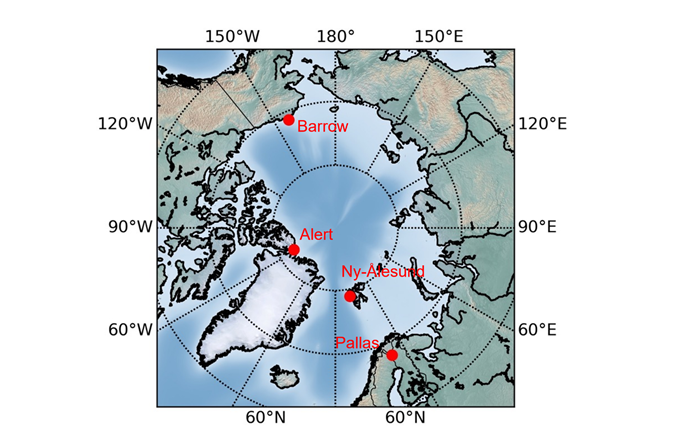DATE2022.02.09 #Press Releases
First standardization of black carbon measurements in the Arctic
Overview of the press release
Black carbon is fine particulate air pollution, such as soot, that contributes to climate change. It absorbs sunlight, converting it to heat, which can raise temperatures and melt snow and ice. It can also contribute to heart and lung disease in humans. Fortunately, it only persists in the atmosphere for about one week, so any reduction could have an impact on air quality and heating of the atmosphere in a relatively short time.
However, while several instruments in the Arctic measure the mass concentration of black carbon, there has not been a single, standardized examination of their measurements to understand exactly how much black carbon is in the atmosphere and its impact— until now. An international group of researchers compared black carbon measurements by various light-absorption instruments in the Arctic and found that they were generally highly correlated and stable for up to 10 years.
They published their results on Oct. 20 in Atmospheric Measurement Techniques.

Figure : Map showing the locations of Barrow, Alaska; Alert, Canada; Nielsen, Spitsbergen Island; and Pallas, Finland, where comparative observations of black carbon were made.
Professor Makoto Koike (Department of Earth and Planetary Physics, Graduate School of Science, The University of Tokyo.), Assistant Professor Moteki Nobuhiro (Department of Earth and Planetary Physics, Graduate School of Science, The University of Tokyo.), Project Assistant Professor Tatsuhiro Mori (Department of Earth and Planetary Physics, Graduate School of Science, The University of Tokyo.) contributed to this research.
To read the full press release, please visit the website of the National Institute of Polar Research, Japan.
Publication details
Journal Atmospheric Measurement Techniques Title Estimates of mass absorption cross sections of black carbon for filter-based absorption photometers in the Arctic Authors Sho Ohata, et al. DOI


